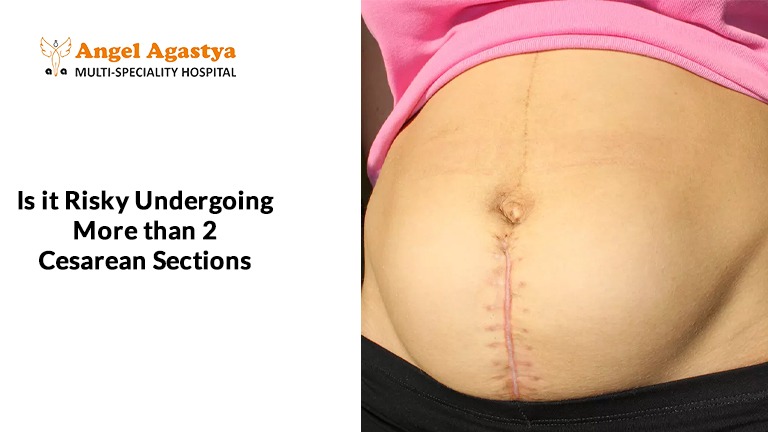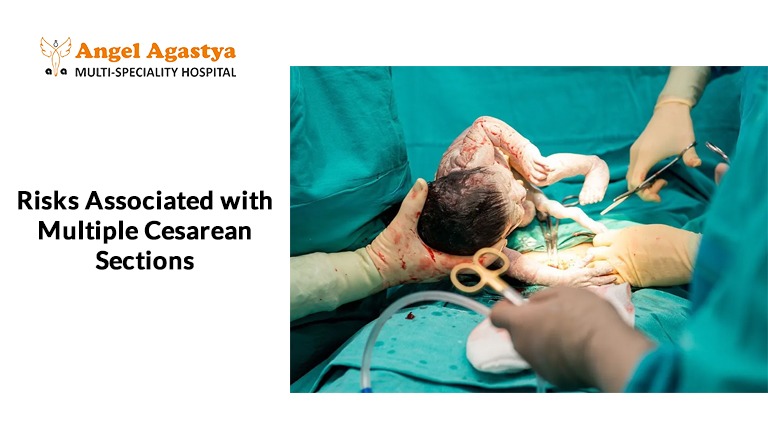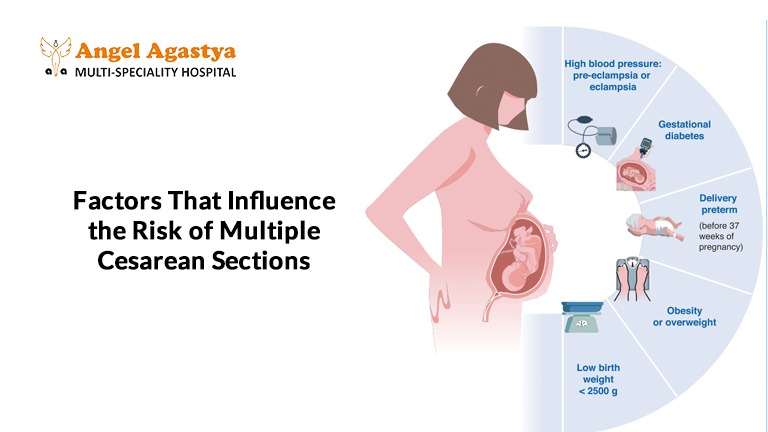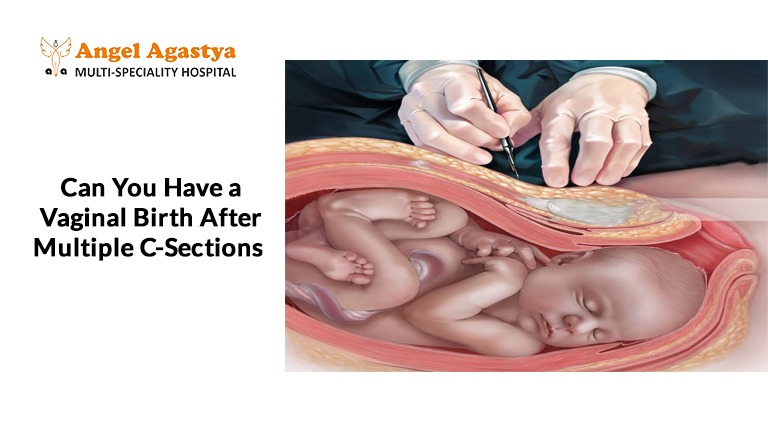Is it risky undergoing more than 2 cesarean
sections?

“Every C-section brings a beautiful new life into the world—but what happens when you need a third or fourth? Is it still safe, or does each surgery add new risks? If you’re wondering how many C-sections are too many, you’re not alone. Let’s uncover the truth about multiple cesarean sections and what it means for your health and future pregnancies
Introduction: The Reality of Multiple Cesarean Sections
Many women today undergo cesarean sections (C-sections) for various medical and personal reasons. In some cases, a C-section is planned due to a previous surgery, while in others, it becomes necessary due to complications during labor. But as the number of cesarean deliveries increases, an important question arises:
Is it risky undergoing more than 2 cesarean sections?
The answer isn’t straightforward. While multiple cesarean sections are generally safe when performed under proper medical supervision, each additional surgery carries increased risks, such as complications related to scar tissue, excessive bleeding, and placenta abnormalities. However, many women successfully deliver multiple babies via C-section without major complications.
So, how risky is it? What factors influence the safety of multiple cesarean sections? Does each surgery make future pregnancies more complicated? Let’s explore the risks, benefits, and precautions to help you make an informed decision for your health and future pregnancies.
What Happens to the Body After a Cesarean Section?
Is it risky undergoing more than 2 cesarean sections? This is a common concern for women who have had previous C-sections and are considering future pregnancies. A cesarean section is a major abdominal surgery where the doctor makes an incision in the abdomen and uterus to deliver the baby. While the body generally recovers well after a single procedure, multiple cesarean sections can lead to increased complications over time.
Each additional C-section affects the uterus, increases scar tissue formation, and prolongs recovery. The risks associated with multiple cesarean sections include excessive bleeding, surgical adhesions, and placental complications like placenta previa or placenta accreta. These conditions can make future pregnancies more challenging and sometimes require additional medical interventions.
Understanding how multiple cesarean sections impact the body is crucial for planning safe pregnancies. Women should discuss their medical history and future pregnancy plans with their doctors to make informed decisions.
Risks Associated with Multiple Cesarean Sections

Undergoing multiple cesarean sections can pose serious health risks for women. While C-sections are often necessary for safe deliveries, each additional surgery increases the likelihood of complications. Understanding these risks can help women make informed decisions about future pregnancies.
1. Increased Risk of Placenta Accreta Spectrum
One of the biggest concerns with multiple cesarean sections is placenta accreta, a condition where the placenta embeds too deeply into the uterine wall. This can lead to severe bleeding during delivery and, in extreme cases, may require a hysterectomy (removal of the uterus) to control blood loss. Women with three or more C-sections face a significantly higher risk of placenta accreta.
2. Higher Chance of Placenta Previa
Placenta previa occurs when the placenta covers the cervix, blocking the baby’s exit. This condition increases the risk of heavy bleeding and often necessitates an emergency C-section. The likelihood of placenta previa doubles after two or more C-sections.
3. Uterine Rupture (Rare but Serious)
A uterine rupture can happen when a weakened C-section scar tears open, endangering both the mother and baby. This risk is higher in women attempting a vaginal birth after cesarean (VBAC).
4. Increased Surgical Complications
- Excessive Bleeding: Scar tissue can make surgery more complex, increasing the need for blood transfusions.
- Infections: Uterine infections become more common with repeated surgeries.
- Injury to Surrounding Organs: The bladder or bowel may be accidentally injured due to adhesions.
5. Longer Surgery and Recovery Time
With each additional C-section, surgery duration and recovery time increase due to complications from scar tissue.
6. Adhesions: The Silent Aftermath
Scar tissue (adhesions) forms after every C-section, potentially leading to chronic pelvic pain, bowel obstructions, and difficulties in future surgeries. Over 50% of women with three or more C-sections develop dense adhesions.
Factors That Influence the Risk of Multiple Cesarean Sections
Several factors impact the safety and risks associated with multiple cesarean sections. Understanding these can help expectant mothers make informed decisions regarding future pregnancies and delivery methods.

1. Individual Health Conditions
A woman’s overall health plays a crucial role in determining the risks of multiple cesarean sections. Women with obesity, diabetes, heart disease, or high blood pressure are at an increased risk of complications during surgery and recovery. These conditions can lead to excessive bleeding, infections, and slower healing after a C-section. Maintaining good health before and during pregnancy can help reduce these risks.
2. Number of Previous C-Sections
The risk level increases with each additional cesarean section:
- The third C-section is slightly riskier than the second, requiring more surgical precision.
- By the fourth or fifth, the risks of placenta previa, placenta accreta, and uterine rupture rise significantly.
3. Pregnancy Spacing Matters
The time between pregnancies directly affects uterine healing. Shorter gaps (less than 18 months) between C-sections increase the likelihood of uterine rupture, leading to life-threatening complications. Proper birth spacing allows the body to recover and reduces risks.
4. Other Pregnancy-Related Complications
Conditions such as preeclampsia, gestational diabetes, and fetal growth restriction can increase surgical risks during a repeat C-section. These complications require close monitoring to ensure the safety of both the mother and baby.
How Many Cesarean Sections Are Considered Safe?

There is no universal limit to how many cesarean sections a woman can have, as each case is unique. However, doctors typically recommend caution after three to four C-sections due to the increased risks of complications such as placenta accreta, uterine rupture, excessive bleeding, and adhesions. Some women have safely undergone five or more C-sections, but this requires careful monitoring by experienced obstetricians.
Medical Guideline:
Most doctors advise limiting C-sections to three or four to minimize surgical and pregnancy-related complications and ensure safer deliveries.
Can You Have a Vaginal Birth After Multiple C-Sections (VBAC)?
A vaginal birth after cesarean (VBAC) is possible after one or two C-sections, but risks increase with three or more prior surgeries.

- Low-Risk VBAC Candidates: Women with one prior C-section and no uterine complications.
- High-Risk VBAC Candidates: Women with multiple C-sections or previous uterine rupture.
Fact: The success rate for VBAC after one C-section is 70%, but drops after Multiple Cesarean Sections.
How to Minimize Risks if You Need Multiple C-Sections
- Work with an Experienced Medical Team
- Choose a highly skilled obstetrician familiar with Multiple Cesarean Sections.
- Ensure the hospital is equipped for emergency care if complications arise.
- Monitor Placenta Position in Every Pregnancy
- Early ultrasounds can detect placenta previa or placenta accreta.
- Space Out Pregnancies
- Allow 18-24 months between deliveries for optimal uterine healing.
- Healthy Lifestyle Choices
- Balanced diet and prenatal care improve recovery and reduce surgical risks.
Conclusion & Summary
While Multiple Cesarean Sections increase the risk of complications, many women safely deliver multiple babies via C-section with the right precautions and expert medical care. Understanding the risks and taking proactive steps can help ensure a safer pregnancy and recovery.
Key Takeaways:
- More than two C-sections increase risks, but successful deliveries are possible.
- Risks include placenta previa, placenta accreta, uterine rupture, excessive bleeding, infections, adhesions, and longer recovery.
- Proper pregnancy spacing, prenatal care, and a skilled medical team significantly reduce risks.
- Maintaining a healthy lifestyle, monitoring placenta position, and discussing delivery options with your doctor can improve safety.
If you’re considering Multiple Cesarean Sections, have open discussions with your doctor to assess your individual risks. With careful planning, medical expertise, and informed decisions, many women continue to have safe pregnancies and healthy babies.
FAQs About Multiple Cesarean Sections
Many women have concerns about Multiple Cesarean Sections and how they affect future pregnancies, recovery, and overall health. Below are detailed answers to some of the most frequently asked questions.
Can I have 4 or more C-sections safely?
- Yes, but each additional surgery increases risks such as excessive bleeding, placenta previa, placenta accreta, and uterine rupture.
- Scar tissue from previous surgeries can make each C-section more complicated.
- Close monitoring by an experienced obstetrician is essential.
How long should I wait between C-sections?
- Doctors recommend 18-24 months to allow the uterus to heal properly.
- Shorter intervals increase the risk of uterine rupture and complications in future pregnancies.
Is a third C-section riskier than a second?
- Yes, but with proper medical care, many women safely undergo three or more C-sections.
- The main risks include placenta abnormalities, excessive scar tissue, and prolonged recovery.
Can I deliver vaginally after 2 C-sections?
- Vaginal Birth After Cesarean (VBAC) may be possible, but the risks increase with each prior C-section.
- The chance of uterine rupture is higher with multiple cesarean deliveries.
- Doctors assess individual risks before recommending a VBAC.
Will multiple Cesarean sections affect future pregnancies?
- Yes, the risks of placenta previa, placenta accreta, and uterine rupture increase with each surgery.
- Adhesions from previous surgeries can also cause complications.
Does a C-section affect fertility?
Not directly, but scar tissue may impact implantation or cause issues like blocked fallopian tubes.
How long is recovery after a third C-section?
Recovery usually takes 6-8 weeks, but complications such as infections, excessive bleeding, or adhesions may prolong healing.
Can I reduce adhesions from multiple Cesarean sections?
- Adhesions are common, but advanced surgical techniques help minimize their severity.
- Post-surgery physical therapy and light movement may reduce discomfort caused by adhesions.
Are C-sections safer than vaginal births?
It depends on the individual case. C-sections are life-saving in some situations but carry risks like infections, longer recovery, and future pregnancy complications.
Can exercise help after multiple Cesarean sections?
Yes! Light activity, pelvic floor exercises, and guided postpartum workouts support faster recovery and prevent long-term complications.

